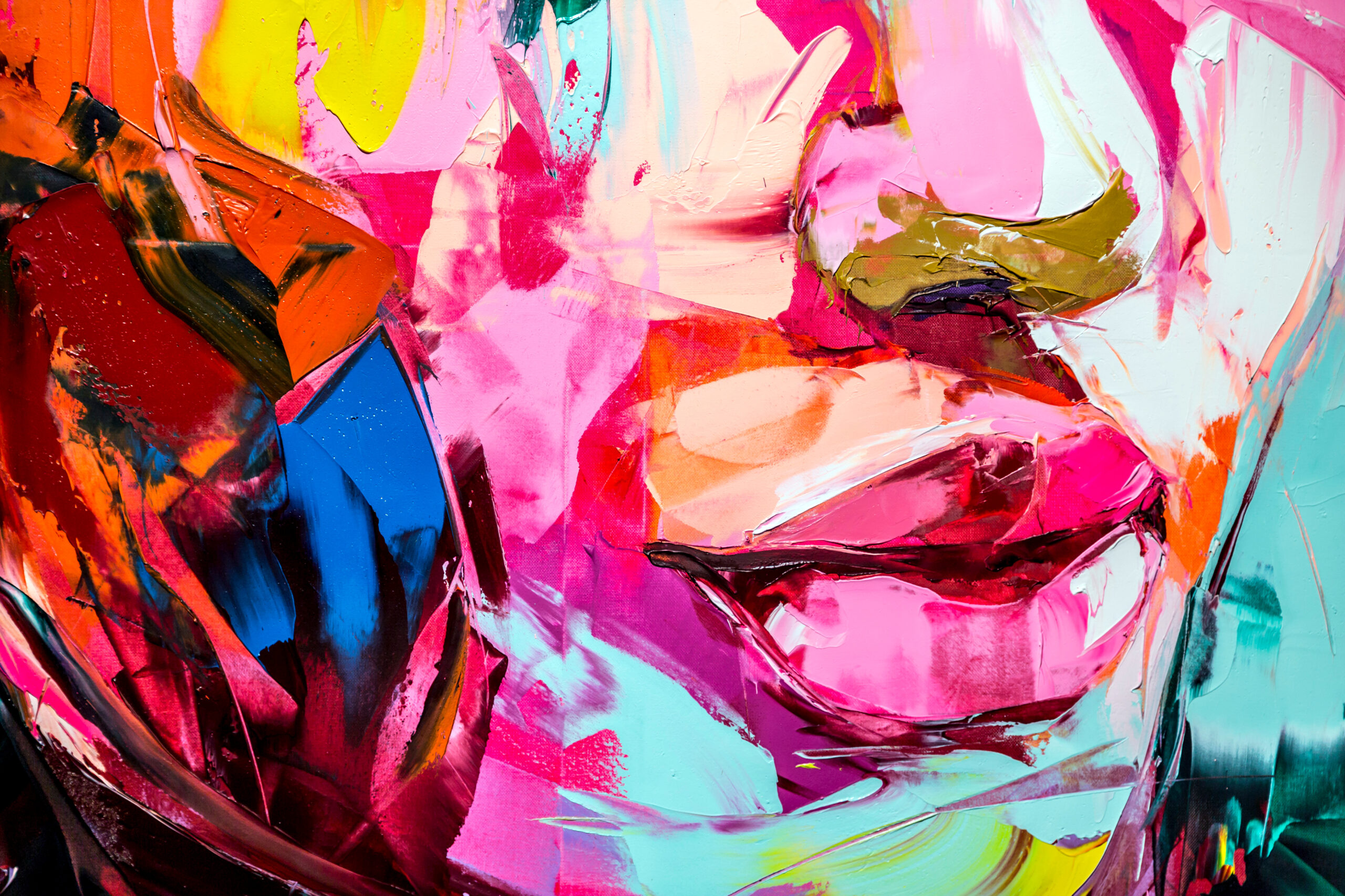The Beauty of Abstraction
For as long as I can remember, I have been drawn to the power of art to evoke emotion. While realistic painting captures the world as we see it, abstract art delves deeper—it expresses what we feel, what we sense, and what words often fail to convey. Non-representational art has a unique ability to speak directly to our emotions, bypassing logic and inviting viewers to experience something personal and profound.
Emotion Through Color
One of the most powerful tools in abstract art is color. Colors carry emotions, memories, and moods that influence the way we experience a piece. A canvas drenched in deep blues and purples may evoke a sense of calm or melancholy, while vibrant reds and oranges radiate energy and passion. As an artist, I use color intentionally, allowing it to guide the emotional tone of my work.
I often ask myself: What am I feeling as I paint? What emotions do I want to communicate? By trusting my instincts and allowing color to lead, I find that the painting naturally begins to take shape in a way that feels authentic.
The Movement of Brushstrokes
Just as a musician uses rhythm to create feeling in a song, artists use brushstrokes to create movement and energy on the canvas. A series of rapid, sweeping strokes can suggest excitement or chaos, while slow, deliberate marks can instill a sense of serenity. The texture created by layering paint or scraping it away adds another dimension, making the piece feel alive.
When I step back from a painting and see how the brushstrokes interact, I often find emotions embedded within the layers—sometimes emotions I wasn’t even consciously aware of while painting. That’s the beauty of abstraction; it allows for a dialogue between the artist and the artwork, revealing hidden depths over time.
The Power of Interpretation
One of the things I love most about abstract art is how it invites the viewer to participate in the experience. Unlike representational paintings, which depict a clear subject, abstraction leaves space for interpretation. No two people will see the same thing in an abstract work, and that’s what makes it so powerful.
I’ve had viewers share their interpretations of my paintings in ways that completely surprised me—seeing stories, emotions, and meanings I hadn’t even considered. That exchange between artist and viewer is what makes abstract art so engaging; it becomes a personal experience shaped by individual perception.
Letting Go of Control
Creating non-representational art requires a willingness to let go of control. Unlike painting a portrait or a landscape, where there are defined guidelines to follow, abstraction is about surrendering to the process. It’s about trusting intuition, embracing imperfection, and allowing the piece to unfold organically.
For me, this is one of the most freeing aspects of being an artist. When I let go of expectations and simply respond to what’s happening on the canvas, the most honest and expressive work emerges. It’s a reminder that art doesn’t always need to be understood—it needs to be felt.
The Connection Between Artist and Viewer
Abstract art has the ability to create an emotional bridge between artist and viewer. While my work is deeply personal, I never expect others to see exactly what I see. Instead, I hope they feel something—whether it’s joy, nostalgia, curiosity, or even discomfort. That emotional connection is what makes art meaningful.
Some of my most impactful moments as an artist have been when someone tells me that a painting moved them, even if they can’t quite explain why. That’s the magic of abstraction—it speaks a language beyond words, one that resonates on a deeper, more instinctive level.
Finding Your Own Meaning
If you’ve ever looked at an abstract painting and felt unsure of what to think, my advice is to let go of the need for explanation. Instead of asking, “What is this supposed to be?” ask yourself, “How does this make me feel?” Pay attention to the colors, the shapes, the movement—let the painting speak to you in its own way.
Abstract art is an invitation, not a puzzle to solve. It’s a space for exploration, for emotion, for seeing the world through a different lens. And that’s what makes it endlessly fascinating.
The Endless Possibilities of Abstraction
Non-representational art is a journey—one that challenges, excites, and inspires both the artist and the viewer. It breaks boundaries, defies expectations, and reminds us that meaning isn’t always about recognition. Sometimes, meaning is about feeling, about connection, about the way a painting stirs something deep within us.
For me, abstraction is more than just a style; it’s a way of seeing, a way of expressing, a way of engaging with the world. And whether you’re creating it or simply experiencing it, the beauty of abstract art is that it meets you exactly where you are, offering something new each time you look.
